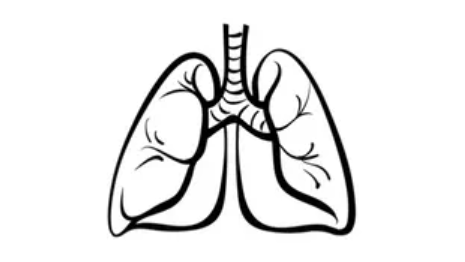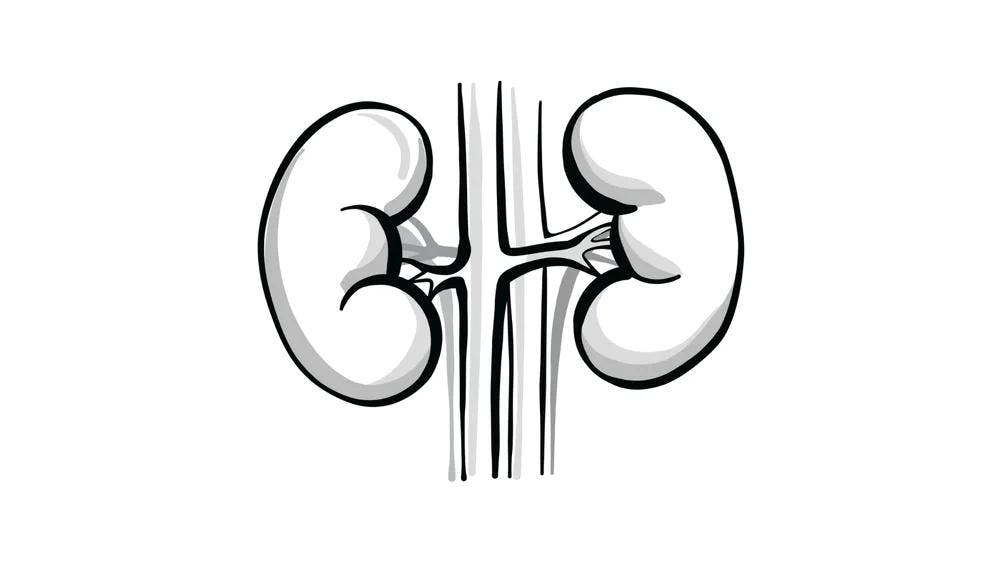Campbell Surveys Participants on Favorable-Risk Frontline Approach in RCC
During a Case-Based Roundtable® event, Matthew Campbell, MD, MS, moderated a discussion on treatment for a 61-year-old patient with lung-metastatic renal cell carcinoma.

Matthew T. Campbell, MD, MS
MODERATOR
Associate Medical Director
Associate Professor
Department of Genitourinary Medical Oncology
Division of Cancer Medicine
The University of Texas MD Anderson Cancer Center
Houston, TX

EVENT REGION Texas
PARTICIPANT LIST Deepa Sashital, MD, PhD | Sumit Gaur, MD | Haroutioun S. Shahinian, MD | Scott Stone, MD | Inna Shmerlin, MD | Fariborz Gorouhi, MD | Maryada S. Reddy, MD | Swetha Yadav, MD | Nithya Palanisamy, MD
CAMPBELL: Why did you pick a single-agent tyrosine kinase inhibitor [TKI]?
SASHITAL: A patient who is resistant to take any treatment would like this treatment. [Patients with] a very favorable prognosis historically have done very well with a single agent long term.
CAMPBELL: OK, these patients certainly exist. I have patients in my clinic who I started on TKIs in 2015 who are still on their frontline option. There are not many of them, but they do exist with very long-term disease control, so it’s still reasonable to consider.

DISCUSSION QUESTIONS
- Did your answer change from the prior question?
- Approximately what proportion of your patients with metastatic RCC harbor bone vs visceral metastasis, and how many have 2 sites of metastasis?
CAMPBELL: If this patient had bone involvement instead of lung but still a favorable risk…what would make you now escalate therapy to a combination?
GAUR: I think the bone involvement worries us. I chose the TKI and the PD-L1 [immune checkpoint inhibitor] combination because that’s what most people are doing right now. But from the data standpoint, if it is truly an indolent disease, it really shouldn’t matter whether it’s lung or bone [involvement].
CAMPBELL: Dr Sashital, which one did you pick after escalating from single-agent TKI?
SASHITAL: Lenvatinib [Lenvima] plus pembrolizumab [Keytruda].
CAMPBELL: Was there any reason to select lenvatinib/ pembrolizumab over the other 2 or [was it] just personal preference?
SASHITAL: Though we are not to do cross-trial comparison, it had the best rate of progression-free survival.1
CAMPBELL: What proportion of your patients with metastatic renal cell cancer harbor bone vs visceral metastases or have more than 2 sites of metastases?
SHAHINIAN: I think I see more visceral disease than bone [disease].
STONE: In my clinic, I see more visceral disease than bone disease. I have had several patients who have had both, such as lung and bone disease at the same time, but I think overall I probably [have seen] more visceral involvement than bone. With this patient, when we escalated to having bone involvement, I chose axitinib [Inlyta] plus pembrolizumab. I am much more comfortable with the adverse event profile of axitinib vs lenvatinib. I’ve had good luck with it. I would probably, in this case, offer radiation therapy, especially if there were painful bone metastases or if the metastases were in a weight-bearing area where you’re worried about fracture.
CASE UPDATE
- Cabozantinib (Cabometyx) plus nivolumab (Opdivo) was initiated.
- A partial response was noted on CT imaging at 4 months after cabozantinib plus nivolumab initiation.
- During cycle 9, the patient reported fatigue, weakness, and a 10-lb weight gain.
- Workup Free thyroxine (T4): low
- Thyroid-stimulating hormone (TSH): high
- Morning cortisol and adrenocorticotropic hormone (ACTH): within normal limits
- MRI of brain: normal pituitary
- Cardiac evaluation (echocardiography): negative
- Patient was treated with levothyroxine.
- Cabozantinib plus nivolumab was restarted when free T4 returned to normal range.
DISCUSSION QUESTIONS
- What immune-related adverse events (AEs) are you commonly seeing?
- How do you manage them?
SHMERLIN: I see a number of endocrinopathies, thyroid disease probably being the most common. In terms of other endocrinopathies, I have not seen a whole lot, but they are fairly easy to manage. I probably would initiate this patient with thyroxine. I generally don’t refer them to endocrinology because it’s fairly straightforward. I’m not sure how to answer whether I can differentiate between TKI and IO [immunotherapy], but I think the key part with this patient is treatment. In terms of the most common AEs from IO, it’s endocrinopathies and colitis, and I’ve also seen some patients with pruritus and rashes….
CAMPBELL: If it’s immune related, in general, they have hyperthyroidism first, and then it becomes profound hypothyroidism. With the TKI, hypothyroidism tends to be a slow death of the thyroid, so you’ll see a gradual increase of the thyroid-stimulating hormone but nothing [extreme]. The [amount of] free T4 will gradually dip, and you’ll have to get them started [on levothyroxine], but I agree. This was something we were worried about when these regimens were first coming out, but I think we’ve all learned that you hold the TKI for a few days if [the patient is] having diarrhea or other [AEs]. Normally, if there’s a rapid improvement, it tends to suggest the TKI [is responsible] and if it’s worsening, it tends to suggest the IO [next] and require more urgent workup. I feel like we’ve got our hands around that over time and experience.
GOROUHI: For adrenal insufficiency, do you check the test as needed or like TSH, you check it each visit?
CAMPBELL: I check cortisol and ACTH on an as-needed basis. In my practice, I see a lot of adrenal cancer so that’s my world of working with these endocrine types of patients. But I’m checking cortisol and ACTH in patients who are having profound fatigue, or having major sudden electrolyte derangement, or something where I’m questioning if the adrenal [gland] is going haywire.
GOROUHI: So, you do it as needed.
CAMPBELL: Yes, exactly. I’ll check the entire spectrum. If it looks like central hypothyroidism, which is thankfully rare, and it’s suggesting you may have panhypopituitarism, those are patients for whom we’re checking the whole panel of laboratory findings and getting a quick workup.
GOROUHI: I check as needed as well, but whenever I get a patient who I think might have IO-related adrenal insufficiency, I usually check a cosyntropin stimulation test rather than just the morning cortisol and ACTH. Do you think that’s too much to do?
CAMPBELL: I normally start with just a morning check, but if it comes off abnormal, then I’m getting cosyntropin stimulation tests. I am normally getting our endocrinologist involved in this, which is a luxury that we have that I know is not necessarily as easy to arrange. But I do think getting that workup quickly [is important] so I normally go the route of checking just the cortisol and ACTH first thing in the morning.
GOROUHI: We don’t have an endocrinologist in town.
CAMPBELL: Yes, clearly you have to do what you think is best for the patient in front of you.
SASHITAL: With cabozantinib, you have liver function test [LFT] abnormalities, and you can get that with the IOs also. Is there any way to distinguish that?
CAMPBELL: It’s a good question. Most of the time with cabozantinib-related AEs, you’re going to get bumps into the grade 1/2 range. It’s very rare with cabozantinib that I’ve seen patients going into the multihundred range that we see with IO-induced hepatitis. Clearly, you’re going to be holding [cabozantinib,] and if patients have rapid recovery of LFTs, that tends to be suggestive that cabozantinib was the big driver. But if as you’re doing your workup and cabozantinib is on hold and LFTs are continuing to increase, that’s suggestive of IO-induced [elevation].
DISCUSSION QUESTIONS
- Do the discontinuation rates from these clinical trials align with your own clinical experience?
- If you are dose-modifying for tolerability, do you believe it is affecting efficacy?
STONE: My discontinuation rate has been pretty low. Fortunately, the patients who I’ve treated, especially in the past few years, have had relatively good performance status going into it.
REDDY: I don’t think I can totally compare to [the rates in the trials], but a lot of times I may…try to underdose [patients to] try to have fewer AEs.
YADAV: Most of my patients with stage IV disease in clinic who I see are older and have frailty, and most of them are on an IO/ TKI combination. I see more AEs from the TKI than the IO. In a couple patients, I had to…discontinue the TKI and keep them on the single-agent IO, which they’re able to tolerate. They could clearly tell the difference once they got off the TKI. The fatigue was [reduced], and hand-foot syndrome got better. The patients felt much better, and they were willing to give just IO a shot, so they got back on single-agent IO. They’re doing well, and so we just continue with single-agent IO.
CAMPBELL: The health-related quality-of-life [QOL] surveys are always interesting data. They are slightly hard to interpret because the questionnaires are influenced and are not perfectly related to the cancers that we’re seeing in front of us, but these are the data that we have. Across the different studies, the takeaway was as compared with sunitinib, patients on CheckMate 214 [NCT02231749] had better QOL.2 Patients on CheckMate 9ER [NCT03141177] had better QOL as compared with sunitinib as well, and a lot of this is thought to be attributed to the lower dosing of TKI on the study.3 KEYNOTE-426 [NCT02853331] QOL was similar to sunitinib, and CLEAR [NCT02811861] QOL was similar as compared with the sunitinib.4,5 Sunitinib when dosed at 4 weeks on, 2 weeks off is often not the best QOL as compared to an adjustment of the sunitinib dosing.
DISCUSSION QUESTIONS
- After discussion of the data sets, what are your key takeaways?
- Do the updated data change your practice?
PALANISAMY: I think they just reinforced what I’ve been doing…. I think we’re going to continue to use ipilimumab [Yervoy] plus nivolumab in intermediate- to high-risk patients. The TKI/IO seems to be similar across the board, at least in terms of overall survival. The response rate and progression-free survival seem to be better for lenvatinib/pembrolizumab. Overall, I don’t think it’s going to change my practice. I think I’m already practicing similarly.
GAUR: It reinforced my choice for the IO/IO combination for intermediate- to high-risk patients. I’m still not very sure about what’s the best approach for favorable risk. I find it very interesting that combination therapies with 70% response rates are having a hard time showing an overall survival benefit. I’m not sure what the best approach is for the favorable-risk patients.
CAMPBELL: We’re also grappling with that decision. It’s interesting because there’s been a big shift where I think a lot of people are considering an IO/IO approach from the standpoint of the low chance of [durable complete remission], but…it’s a chance to get off therapy, though it’s a hard decision to make given the toxicity that you can run into.
REFERENCES
1. Choueiri TK, Eto M, Motzer R, et al. Lenvatinib plus pembrolizumab versus sunitinib as first-line treatment of patients with advanced renal cell carcinoma (CLEAR): extended follow-up from the phase 3, randomised, open-label study. Lancet Oncol. 2023;24(3):228-238. doi:10.1016/S1470-2045(23)00049-9
2. Cella D, Choueiri TK, Hamilton M, et al. Health-related quality of life (HRQoL) in previously untreated patients with advanced renal cell carcinoma (aRCC) in CheckMate 214: five-year follow-up results. J Clin Oncol. 2022;40(suppl 6):307. doi:10.1200/JCO.2022.40.6_suppl.307
3. Cella D, Motzer RJ, Suarez C, et al. Patient-reported outcomes with first-line nivolumab plus cabozantinib versus sunitinib in patients with advanced renal cell carcinoma treated in CheckMate 9ER: an open-label, randomised, phase 3 trial. Lancet Oncol. 2022;23(2):292-303. doi:10.1016/S1470-2045(21)00693-8
4. Bedke J, Rini BI, Plimack ER, et al. Health-related quality of life analysis from KEYNOTE-426: pembrolizumab plus axitinib versus sunitinib for advanced renal cell carcinoma. Eur Urol. 2022;82(4):427-439. doi:10.1016/j.eururo.2022.06.009
5. Motzer R, Porta C, Alekseev B, et al. Health-related quality-of-life outcomes in patients with advanced renal cell carcinoma treated with lenvatinib plus pembrolizumab or everolimus versus sunitinib (CLEAR): a randomised, phase 3 study. Lancet Oncol. 2022;23(6):768-780. doi:10.1016/S1470-2045(22)00212-1
Enhancing Precision in Immunotherapy: CD8 PET-Avidity in RCC
March 1st 2024In this episode of Emerging Experts, Peter Zang, MD, highlights research on baseline CD8 lymph node avidity with 89-Zr-crefmirlimab for the treatment of patients with metastatic renal cell carcinoma and response to immunotherapy.
Listen
Beyond the First-Line: Economides on Advancing Therapies in RCC
February 1st 2024In our 4th episode of Emerging Experts, Minas P. Economides, MD, unveils the challenges and opportunities for renal cell carcinoma treatment, focusing on the lack of therapies available in the second-line setting.
Listen









